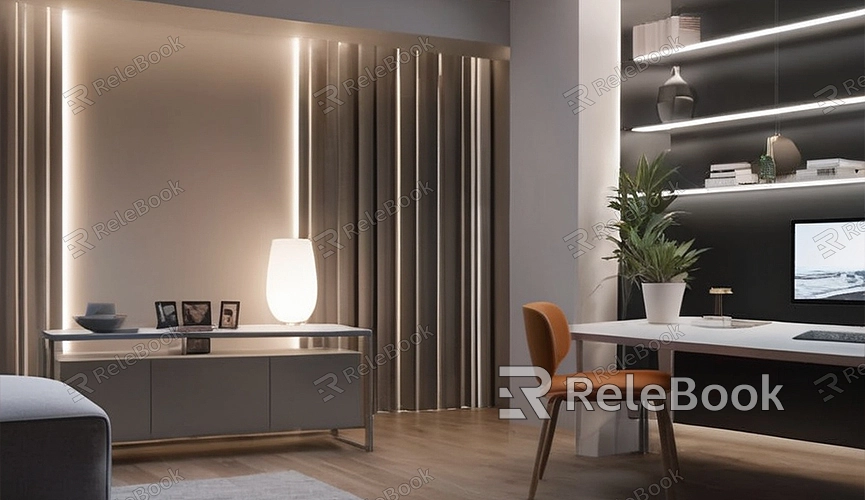Blender How to Remove Texture from Ceiling
Blender is an incredibly powerful 3D modeling and rendering software used to create complex 3D scenes and animations. When working with 3D models, there are times when you need to modify or remove materials and textures. This article will introduce how to remove the texture from a ceiling in Blender.
Open the Blender Project File
Firstly, open the Blender software and load the project file you need to modify. If you don't have a project file yet, you can create a new one and create a simple ceiling model within it.
1. Create or Load the Project
After opening Blender, you can load existing project files by selecting "Open" from the "File" menu or choose "New" to create a new project.

2. Create the Ceiling Model
If it's a new project, it's recommended to create a simple ceiling model first. You can simulate a ceiling by adding a plane (Shift + A -> Mesh -> Plane) to the scene.
Select the Ceiling Object
In Blender's 3D view, select the ceiling object from which you want to remove the texture. You can select it by right-clicking on the object or finding and selecting it in the "Scene" panel.
1. Switch to "Object Mode"
Ensure you are currently in "Object Mode." You can select "Object Mode" from the mode switching menu at the top left corner of the Blender interface.
2. Select the Object
Right-click on the ceiling object to ensure it's selected. The selected object will be highlighted in the 3D view.
Open the Material Properties
On the right side of the Blender interface, find the "Material Properties" panel. This panel is used to manage the materials and textures of the selected object.
1. Enter the "Material Properties" Panel
Click on the "Material Properties" icon (a sphere icon) in the right toolbar to open the material properties panel.
2. Choose the Material
In the material properties panel, you'll see a list of materials for the currently selected object. Click on the name of the material you want to modify to access its detailed settings.
Remove the Texture
In the material properties, you can see all the texture nodes related to the material. Next, we need to find and remove the nodes associated with the ceiling texture.
1. Enter the "Shading" Workspace
Switch to the "Shading" workspace in Blender. You can choose "Shading" from the workspace tabs at the top of the interface to enter the node editing view.
2. Find the Texture Node
In the node editing view, you'll see all the nodes for the current material. Find the node representing the texture, usually the "Image Texture" node.
3. Delete the Texture Node
Select the texture node and press the "Delete" key to remove it. This will remove the texture from the material.
Check the Result
Return to "Material Preview" mode and check the material effect of the ceiling object. At this point, the ceiling should have no texture, retaining only the material's color or other settings.
1. Switch to "Material Preview" Mode
At the top of the 3D view window, find the "Material Preview" button (a sphere icon) and click on it to switch to material preview mode.
2. Check the Material Effect
Observe the ceiling object to ensure the texture has been successfully removed. If you need to further adjust the material, you can do so in the material properties panel.
Save the Project
After making all the modifications, remember to save your project file. You can save the modified project file to a specified location by selecting "Save" or "Save As" from the "File" menu.
By following the above steps, you can easily remove the texture from a ceiling in Blender. Whether it's for simplifying the model or reapplying new textures, these steps are very practical. If you need high-quality 3D textures and HDRI while creating models and virtual scenes, or if you need 3D model downloads, you can download them directly from Relebook and import textures and 3D models into your model for use.

